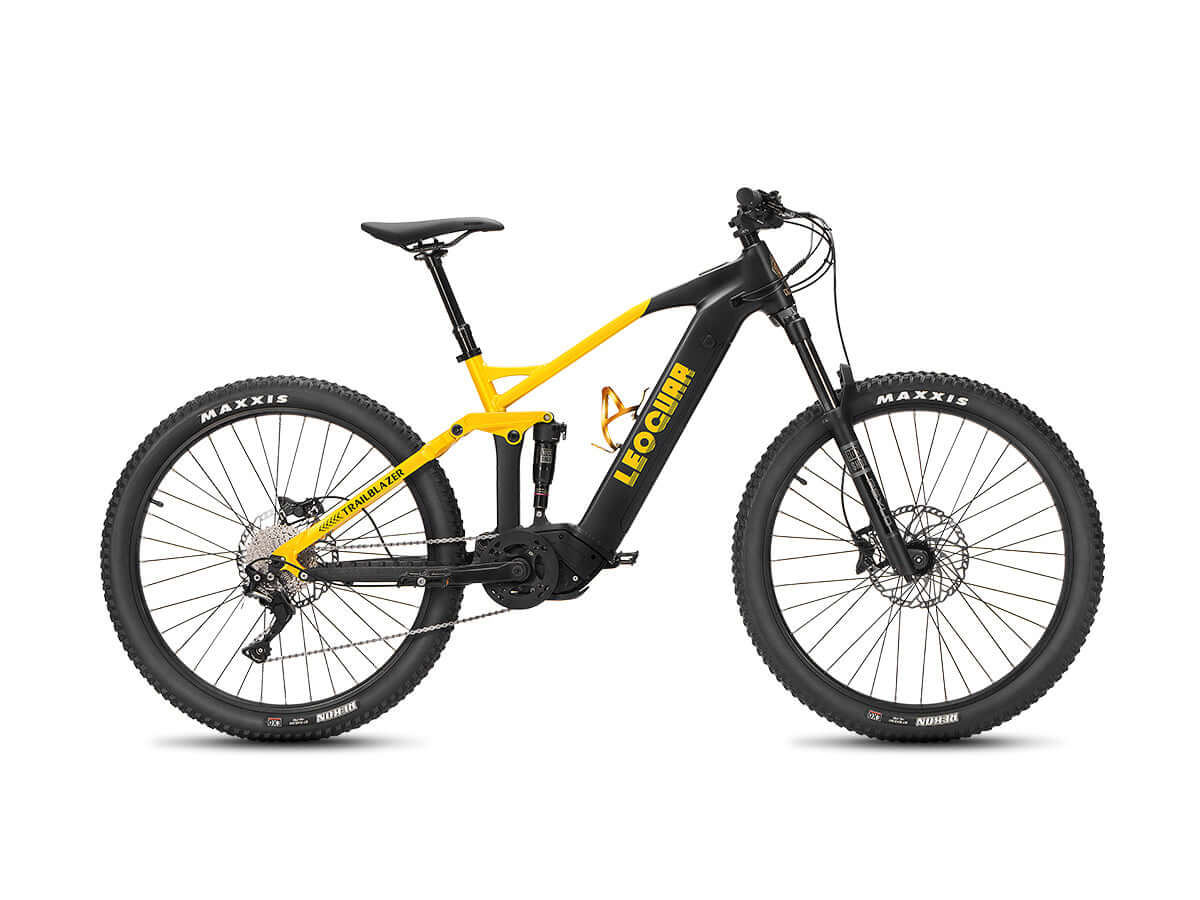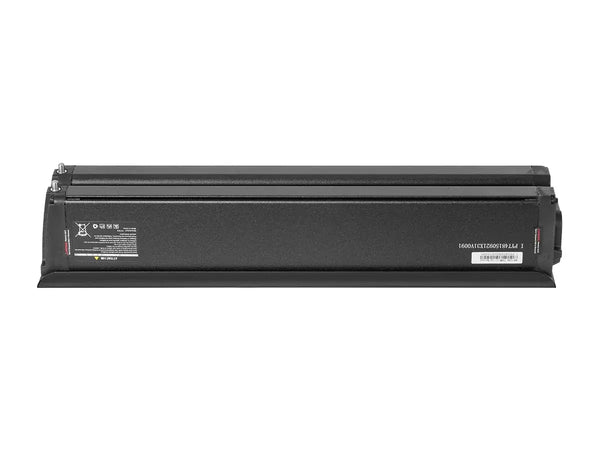
What Makes an Electric Bicycle Have the Longest Range?
Why E-Bike Range Varies So Much
Ever wonder why two e-bikes with similar prices can have very different ranges? Many people want to find an electric bicycle with the longest range. But getting maximum electric bike distance isn't about one magic part. It's actually about how the battery, motor, bike design, and your riding style work together. Companies often advertise their best-case numbers. These ideal numbers don't always match real-world performance.
We will break down the key factors that decide how far you can really go on one charge. By the end, you'll know how to judge any e-bike's potential and get the most range from your choice.
The Heart of Range
At the core of every e-bike's range is its battery. Think of it as the fuel tank. The larger the tank, the more energy you can use. Many companies talk about Volts or Amp-hours, but these numbers only tell part of the story. To really understand a battery's power and compare different options fairly, you need to look at its Watt-hour rating.
Understanding Watt-Hours (Wh)
The most important number for battery power is Watt-hours (Wh). This number shows the total energy stored in the battery. It predicts potential range better than anything else.
You can calculate it with a simple formula: Volts (V) × Amp-hours (Ah) = Watt-hours (Wh)
For example, a 48V battery with 15Ah has 720Wh capacity. A 36V battery with 20Ah also has 720Wh. Even though their voltage and amp-hour specs are different, their total energy is the same. When shopping for an electric bicycle with the longest range, a higher Wh number is almost always better. Here's what you can expect:
| Battery Capacity (Wh) | Typical Real-World Range | Best For |
|---|---|---|
| 300-500Wh | 20-45 miles (32-72 km) | Short commutes, casual city riding |
| 500-750Wh | 35-65 miles (56-105 km) | Daily commuting, longer recreational rides |
| 750-1000Wh | 50-90 miles (80-145 km) | Long-distance touring, serious enthusiasts |
| 1000Wh+ | 80+ miles (128+ km) | Extreme long-range, cargo hauling, minimizing charging |
Some premium models can offer over 2000Wh or even 3000Wh, with claimed ranges of 200 or 300 miles. However, most consumer e-bikes have 500Wh to 840Wh, which works great for long-range performance.
Dual Batteries and Extenders
A growing trend for maximizing electric bike distance is using dual-battery setups or range extenders. Some bikes can hold a second battery pack, which doubles the Wh capacity and range. Others offer smaller range extenders that mount like water bottles and add 150-250Wh for extra distance. This modular approach gives you flexibility. You only carry extra weight when you need the extra miles.
The Engine of Your Ride
If the battery is the fuel tank, the motor is the engine. Its efficiency, power, and type greatly affect how that fuel gets used. A powerful motor might feel exciting, but an inefficient one will drain your battery quickly.
Hub Motors vs. Mid-Drive Motors
There are two main types of motors on e-bikes today, and each affects range differently.
Hub Motors: These sit in the hub of the front or rear wheel. They are simpler, cheaper, and need less maintenance. Rear hub motors are more common and give a "pushing" feeling. However, they work separately from the bike's gears, so they can be less efficient on steep hills or at very low speeds. They are basically a single-speed engine. For flat ground and steady speeds, a hub motor can work well, but it struggles and uses more power on varied terrain.
Mid-Drive Motors: These motors sit in the center of the bike's frame, where the pedals connect. They send power directly to the drivetrain (the chain and gears). This is a big advantage for efficiency. By using the bike's gears, the motor can work in its best RPM range, like a car's engine. This makes mid-drive systems much more efficient on hills and varied terrain, which means longer range from the same size battery. They feel more natural because the assistance works with your pedaling.
For a rider seeking the longest range, especially over hilly or mixed terrain, a quality mid-drive motor is usually the better choice.
Torque Sensors vs. Cadence Sensors
How the motor knows when to help is also important.
Cadence Sensors: These simple sensors turn the motor on when you start pedaling and off when you stop. The assistance level depends on your setting (like Eco, Tour, Turbo) and doesn't change based on how hard you pedal. It's an on/off system. This can create jerky rides and waste energy, since the motor may give full power even when you're pedaling lightly.
Torque Sensors: These are more advanced. They measure how much force you put on the pedals and give proportional motor help. If you pedal harder, the motor gives more help. If you pedal lightly, it gives less help. This creates a smooth, natural experience that feels like you have super-strong legs. More importantly, it's much more efficient.
By matching your effort, it only uses the energy needed, saving battery life and extending electric bike distance significantly. Most premium mid-drive systems use torque sensors. They are a key feature to look for if you want maximum range.
Design and Physics
An e-bike is still a bicycle, and physics rules apply. The bike's design, weight, and parts affect how easily it moves and how much energy it uses.
Weight Matters
Total weight—the bike, rider, and any cargo—is a major factor. It takes more energy to move heavier objects and push them up hills. While you can't easily change your weight, the bike's weight is important to consider.
A heavy, 70-pound fat-tire bike with a huge battery will naturally need more energy to move than a sleek, 40-pound commuter bike, even with the same motor. Companies constantly work to reduce frame weight with materials like aluminum and carbon fiber without losing strength. When comparing two bikes with similar battery and motor specs, the lighter one will almost always have longer potential range.
Tire Choice and Pressure
Tires are your only connection to the road, and they create rolling resistance.
Tire Type: Wide, knobby fat tires are great for sand, snow, or rough trails, but on smooth pavement, they create lots of friction. This "rolling resistance" makes the motor work harder to maintain speed, greatly reducing range. For commuters and road riders, narrower, smoother tires are much more efficient. Gravel bike or trekking tires offer a good balance between comfort and efficiency for mixed-terrain riding.
Tire Pressure: This is one of the easiest and most overlooked ways to improve range. Under-inflated tires sag and create a larger contact area with the ground, increasing rolling resistance a lot. Always keep your tires inflated to the manufacturer's recommended pressure (usually printed on the tire's sidewall). Checking your ebike tire pressure once a week can add miles to your range.
The Human Factor
The most variable factor in the range equation is you—the rider. How, where, and when you ride will make your real-world range change on every trip.
Your Riding Style
Are you a "set it and forget it" rider who puts the bike in Turbo mode and never pedals? Or are you an active rider who uses assist levels strategically?
Assist Level: The biggest influence you have on range is the pedal assist level (PAS) you choose. Eco or low-assist modes might only double your pedal power, using little energy from the battery. Turbo or high-assist modes might quadruple your power, but they drain the battery much faster. A simple rule: using the lowest practical assist level for your situation will always give the longest range. Save higher settings for steep hills or when you need quick speed.
Throttle Usage: Many e-bikes, especially in the US market, come with a throttle. While convenient, relying only on the throttle turns your e-bike into a low-power electric scooter and will use battery power at the fastest rate. Using the throttle sparingly or not at all is key for achieving maximum electric bike distance.
Gearing and Cadence: On a mid-drive e-bike, using your gears well is crucial. Just like on a regular bike, you should shift to an easier gear for starting from stops and climbing hills. This keeps your pedaling speed (cadence) in an efficient zone (typically 70-90 RPM). A smooth, steady cadence prevents the motor from working too hard in a difficult gear, which saves surprising amounts of energy.

Terrain and Conditions
Where you ride is just as important as how you ride.
- Hills: Climbing hills needs massive amounts of energy compared to riding on flat ground. A route with constant ups and downs will drain your battery much faster than a flat one.
- Wind: Riding into strong headwind is like riding up a constant, invisible hill. It can increase energy use by 50% or more.
- Temperature: Lithium-ion batteries work best in mild weather. In very cold temperatures (below freezing), a battery's effective capacity and power output can drop by 20-30% or more, temporarily shortening your range until it warms up.
By understanding that the longest range electric bicycle is not just a product you buy but a system you manage, you can make smarter choices. It's a combination of a large battery (high Wh), an efficient mid-drive motor with a torque sensor, a lightweight design with appropriate tires, and, most importantly, a smart and engaged riding style.
Frequently Asked Questions
1. Q: What's the most important factor for getting the longest range on an e-bike?
A: Battery capacity measured in Watt-hours (Wh) is the most important factor. A higher Wh rating generally means longer range, but your riding style and assist level choices also play huge roles.
2. Q: Are mid-drive motors always better than hub motors for range?
A: Mid-drive motors are typically more efficient, especially on hills and varied terrain, because they work with the bike's gears. However, hub motors can be very efficient on flat terrain and are often more affordable.
3. Q: How much can cold weather affect my e-bike's range?
A: Cold temperatures below freezing can reduce battery capacity and range by 20-30% or more. The battery will return to normal performance once it warms up, but plan for shorter rides in winter.
4. Q: What's the difference between torque sensors and cadence sensors for range?
A: Torque sensors are much more efficient because they provide assistance proportional to your pedaling effort. Cadence sensors are simpler but less efficient, often providing full power even when you're pedaling lightly.
5. Q: Can I add a second battery to increase my e-bike's range?
A: Some e-bikes are designed for dual-battery setups or range extenders that can add 150-250Wh of extra capacity. Check with your manufacturer to see if your bike supports additional batteries or range extender accessories.









































Leave a comment